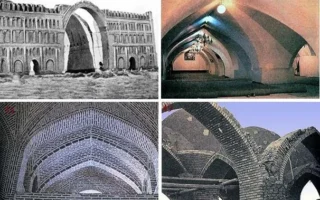Introduction:
Monumental architecture stands as a testament to human creativity, ambition, and ingenuity throughout the ages. From towering structures that reach for the heavens to majestic edifices that commemorate historical events, monumental architecture has captivated and inspired people across civilizations. In this exploration, we delve into examples of monumental architecture from various periods and cultures, celebrating their enduring legacy and timeless grandeur.
- Understanding Monumental Architecture
- The Great Pyramid of Giza: A Colossal Wonder of the Ancient World
- The Parthenon: Iconic Symbol of Classical Greek Civilization
- The Colosseum: Majestic Amphitheater of Ancient Rome
- The Taj Mahal: A Jewel of Islamic Architecture
- The Great Wall of China: Engineering Marvel of Ancient China
- Hagia Sophia: Architectural Marvel of Byzantine Constantinople
- Conclusion: Reflecting on the Enduring Majesty of Monumental Architecture
1.Understanding Monumental Architecture:
Monumental architecture encompasses structures of immense scale, grandeur, and significance, often erected to commemorate historical events, honor deities, or showcase the power and prestige of a civilization. These architectural marvels serve as enduring symbols of cultural identity, artistic achievement, and human innovation, standing as testaments to the creativity and ambition of past societies.
2.The Great Pyramid of Giza: A Colossal Wonder of the Ancient World:
The Great Pyramid of Giza, located on the outskirts of Cairo, Egypt, is perhaps the most iconic example of monumental architecture from antiquity. Built during the reign of Pharaoh Khufu in the 26th century BCE, the Great Pyramid is the largest and most elaborate of the three pyramids on the Giza plateau. Standing at a height of approximately 146 meters, it was constructed using massive limestone blocks, meticulously aligned to form a perfect pyramid shape. The Great Pyramid served as a tomb for Pharaoh Khufu and is a testament to the advanced engineering and architectural prowess of ancient Egypt.
3.The Parthenon: Iconic Symbol of Classical Greek Civilization:
Perched atop the Acropolis in Athens, Greece, the Parthenon is a masterpiece of classical Greek architecture and a symbol of democratic ideals and artistic achievement. Built in the 5th century BCE under the leadership of the statesman Pericles, the Parthenon served as a temple dedicated to the goddess Athena, patron deity of Athens. The temple’s architectural design, characterized by its Doric columns, sculptural friezes, and pedimental sculptures, exemplifies the harmonious proportions and aesthetic perfection of classical Greek architecture.
4.The Colosseum: Majestic Amphitheater of Ancient Rome:
The Colosseum, located in the heart of Rome, Italy, is a monumental amphitheater that stands as a testament to the grandeur and spectacle of ancient Roman civilization. Constructed during the Flavian dynasty in the 1st century CE, the Colosseum was used for gladiatorial contests, animal hunts, and public spectacles that entertained and enthralled the Roman populace. With its elliptical shape, towering arches, and intricate network of corridors and chambers, the Colosseum remains an enduring symbol of Roman engineering prowess and architectural innovation.
5.The Taj Mahal: A Jewel of Islamic Architecture:
The Taj Mahal, located in Agra, India, is a sublime example of monumental architecture from the Mughal period. Commissioned by the Mughal emperor Shah Jahan in the 17th century as a mausoleum for his beloved wife Mumtaz Mahal, the Taj Mahal is renowned for its exquisite beauty and symmetrical design. Constructed from white marble adorned with intricate carvings, inlaid precious stones, and decorative motifs, the Taj Mahal is a masterpiece of Islamic architecture and a UNESCO World Heritage Site.
6.The Great Wall of China: Engineering Marvel of Ancient China:
The Great Wall of China is a monumental fortification that stretches across northern China, spanning approximately 21,196 kilometers. Built over several centuries starting in the 7th century BCE, the Great Wall served as a defensive barrier against invasions from nomadic tribes and other foreign powers. Constructed using a variety of materials, including stone, brick, and earth, the Great Wall is a remarkable feat of engineering and a symbol of Chinese resilience and determination.
7.Hagia Sophia: Architectural Marvel of Byzantine Constantinople:
The Hagia Sophia, located in Istanbul, Turkey, is a monumental cathedral-turned-mosque-turned-museum that embodies the rich cultural heritage of Byzantine and Ottoman civilizations. Built in the 6th century CE by the Byzantine emperor Justinian I, the Hagia Sophia is renowned for its massive dome, intricate mosaics, and architectural innovation. Over the centuries, it has served as a Christian cathedral, Islamic mosque, and secular museum, reflecting the diverse religious and cultural influences that have shaped its history.
Conclusion: Reflecting on the Enduring Majesty of Monumental Architecture:
In conclusion, monumental architecture stands as a testament to the creativity, ambition, and ingenuity of human civilizations throughout history. From the towering pyramids of ancient Egypt to the majestic cathedrals of medieval Europe, these architectural marvels continue to inspire awe and admiration, serving as enduring symbols of cultural identity and artistic achievement. By studying and appreciating the examples of monumental architecture from different periods and cultures, we gain a deeper understanding of the shared human aspirations and achievements that transcend time and geography.




